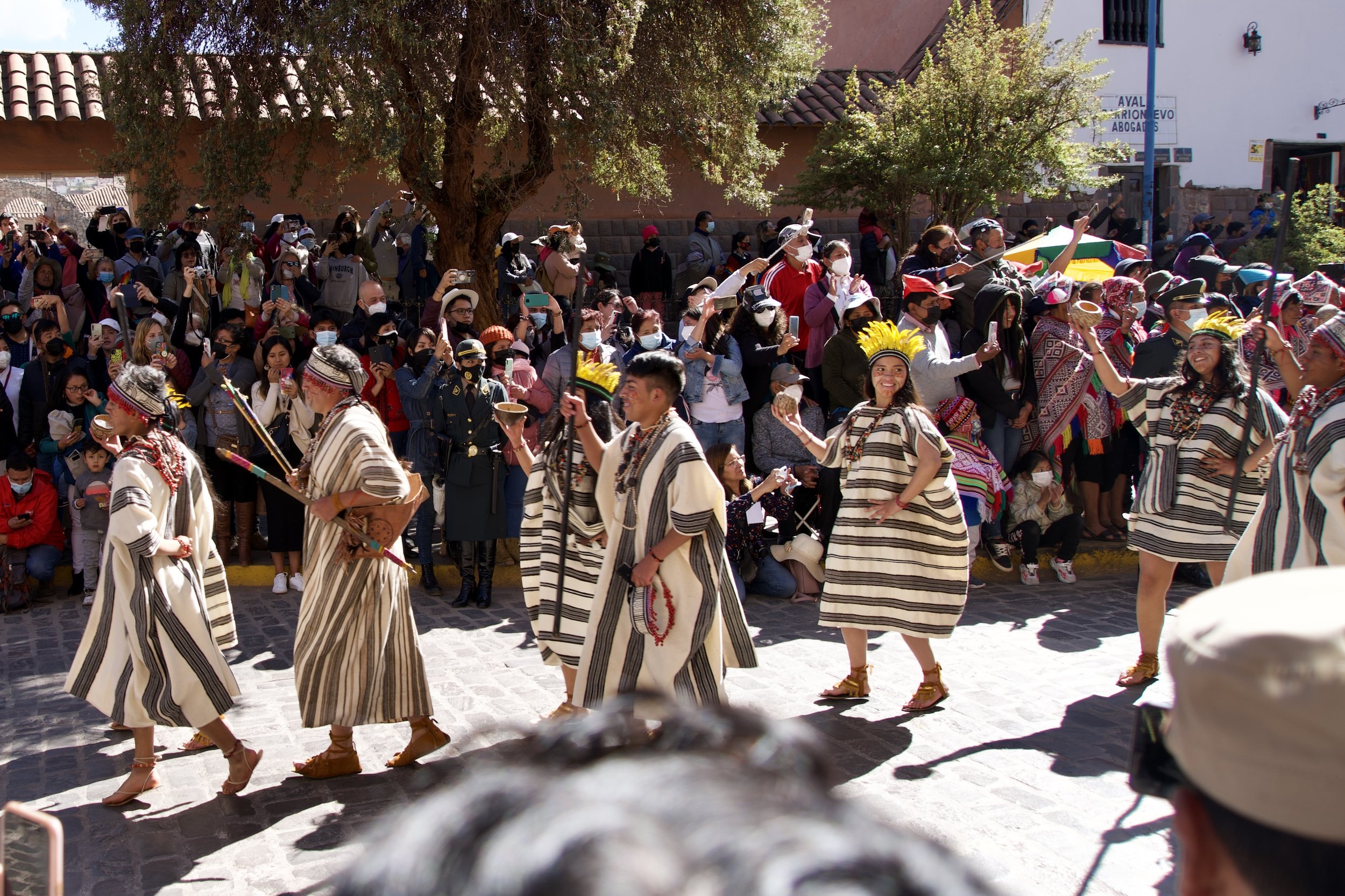Inti Raymi 2022
Inti Raymi is the biggest festival of the year in Cusco. The festivities start at the Qorikancha, move to the Plaza de Armas and finish in the afternoon at Sacsayhuaman.
In Quechua, inti means sun and raymi is a festival. This modern event commemorates the Inca solstice festival that the Spanish outlawed in the 1500s. It was brought back in the 1940s, albeit with some modern adaptations. The original details of Inti Raymi were erased by the Spanish, but historians have gleaned what they can from archives of Spanish documents and chronicles. One important modern adaptation is that the main actors have mics and their lines are broadcast on giant speakers.
When Inti Raymi was resuscitated in the 1940s, it was planned as a scripted reenactment of what Inti Raymi may have been like. The play is set during the reign of Pachacutec, the 9th Inca. Pachacutec was the great builder of many Inca archeological sites, including Machu Picchu. The statue that stands in the Plaza de Armas is of Pachacutec.
Ceremony at Qorikancha
The first ceremony of the day, at the Qorikancha, presents all of the soldiers from the four suyu and the different groups of ñustas, aqllas and t’ika t’akaqkuna. At the Qorikancha, soldiers and the representatives of all four suyu come down from the temple and spread across the lawn below, singing, dancing and playing drums and flutes.
The Quechua name for the Inca’s territory is Tahuantinsuyu, which means “the four realms.” The Inca divided the land they conquered across South America into four suyu: Chinchasuyu in the north, Collasuyu in the south, Antisuyu in the east and Kontisuyu in the west. (Read about the Qorikancha in the archeological sites of my Cusco City Guide). The ñustas and aqllas both dedicated their lives to spiritual practices and held some political power. The t’ika t’akaqkuna carried flowers to ceremonies. (T’ika means flower in Quechua).
The Inca appears after all of the other actors have taken their places and the dances are finished. He only has a few lines, greeting the morning sun and telling everybody to go with him to Haukaypata and then to Sacsayhuaman.

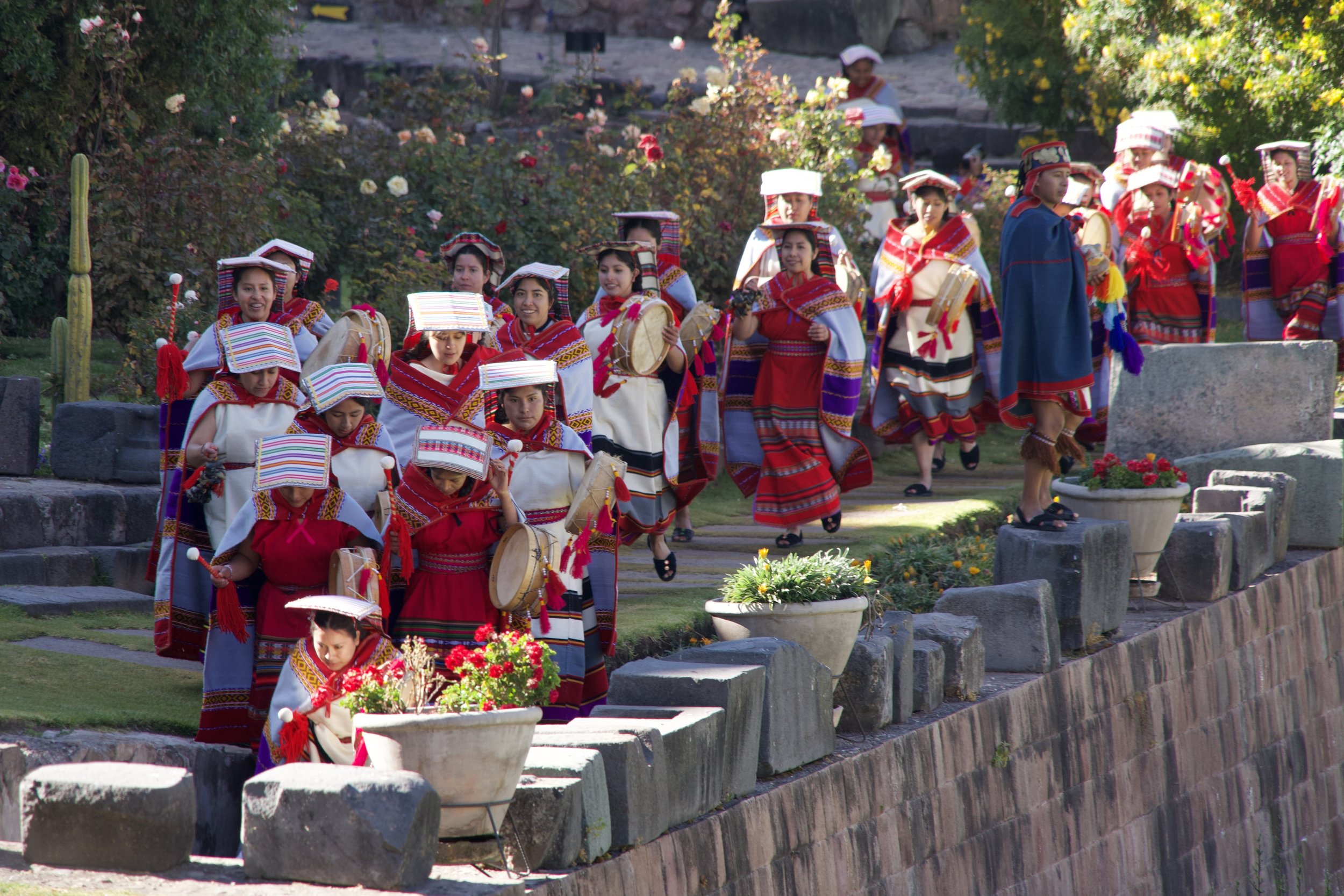
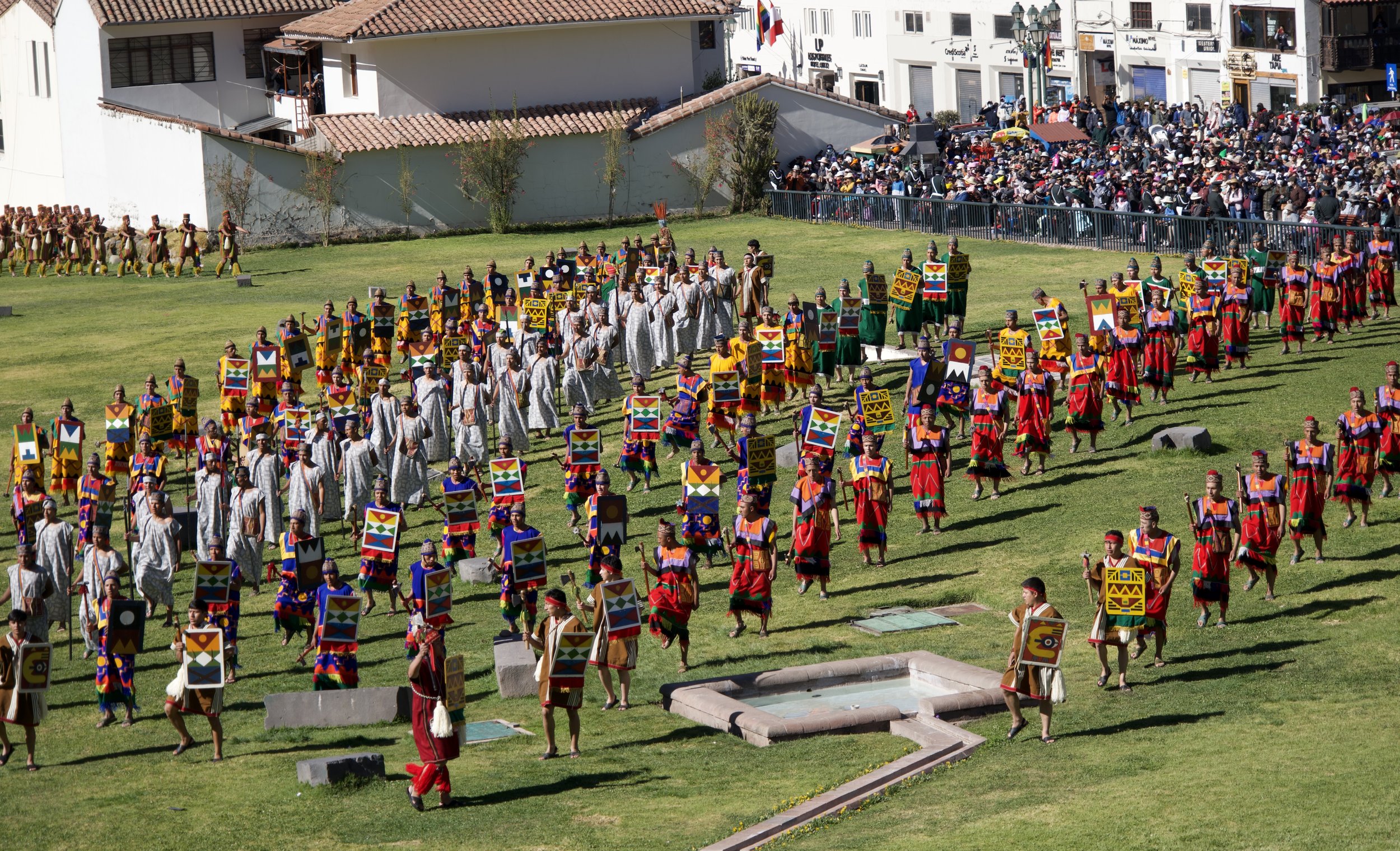
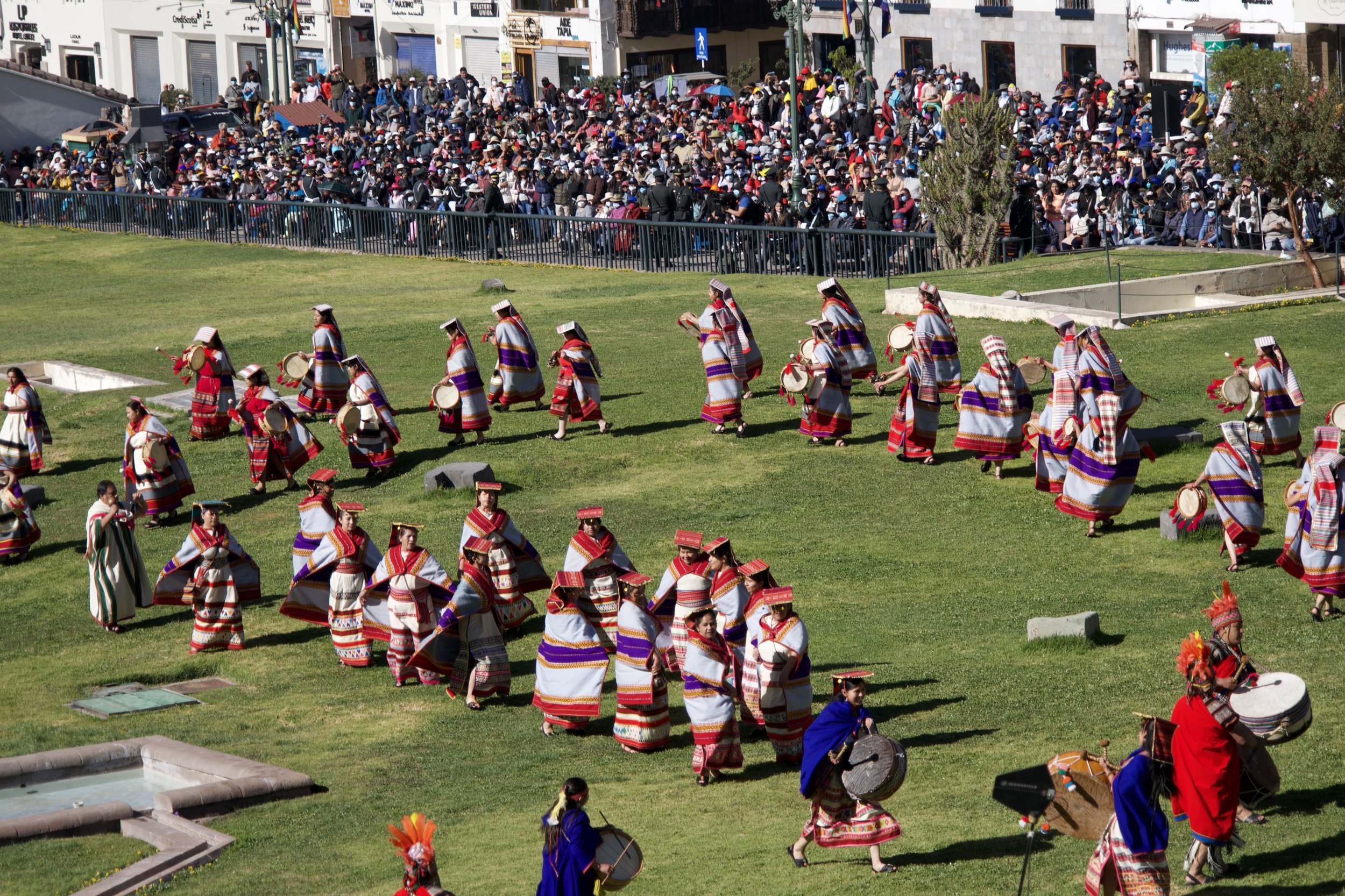
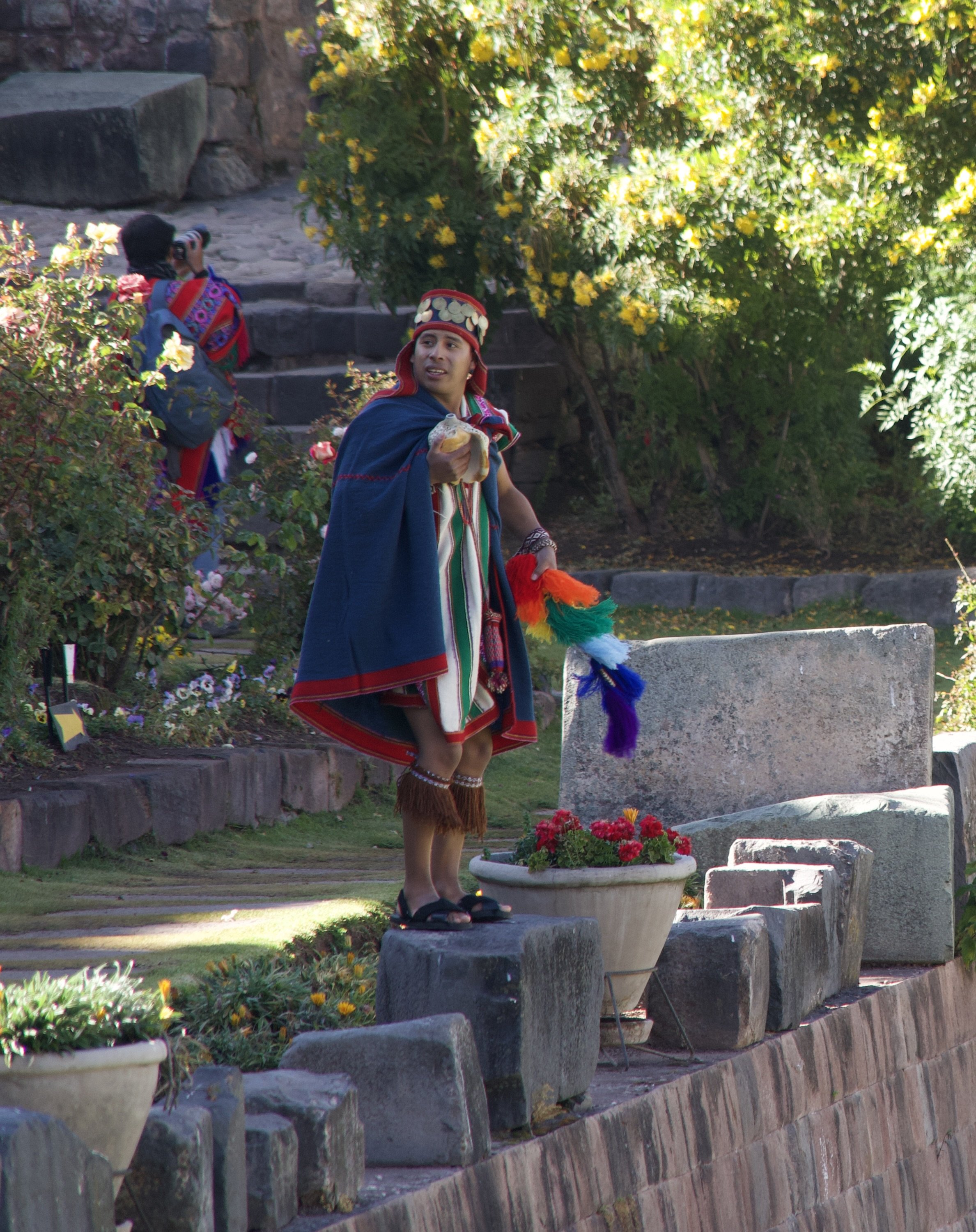
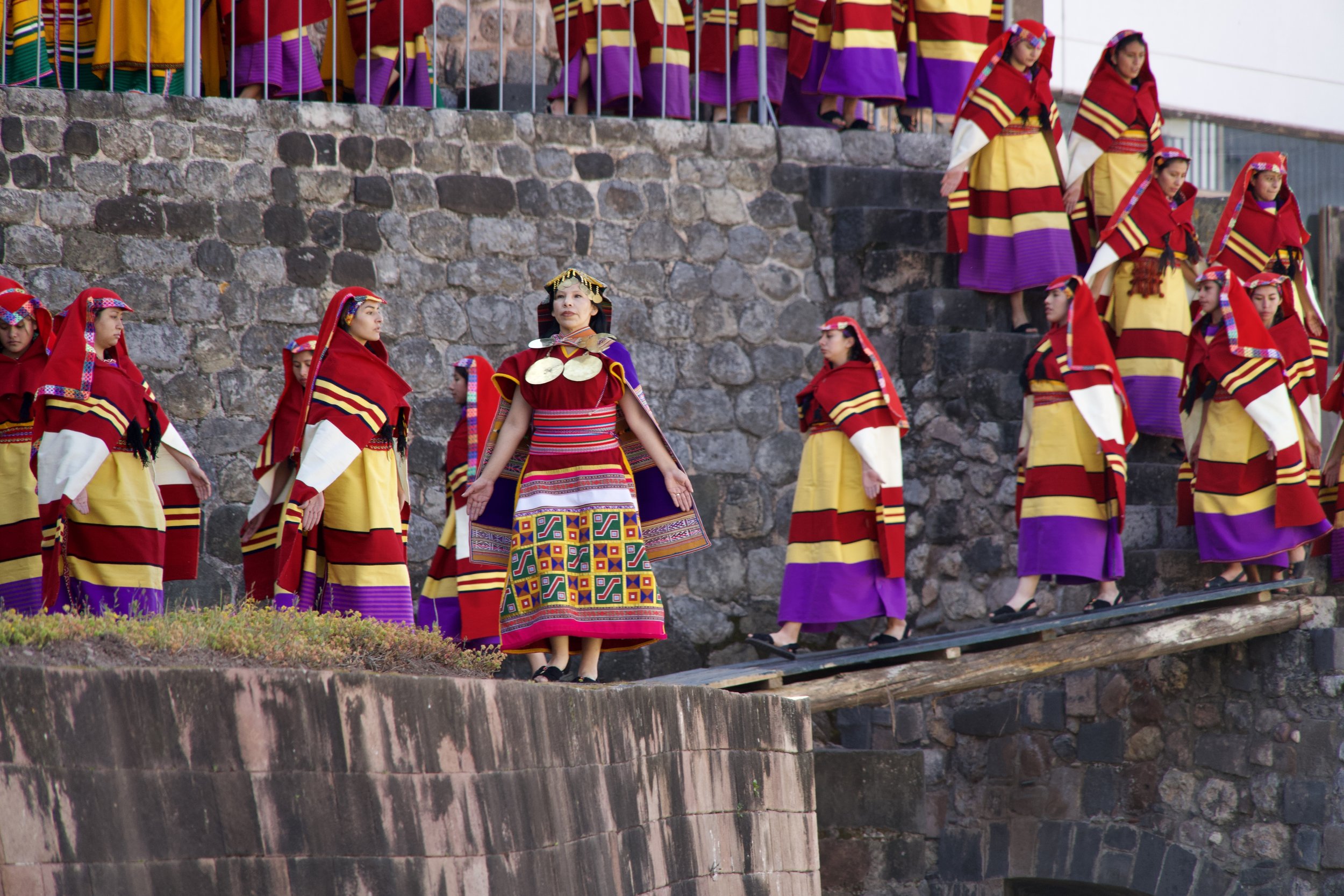
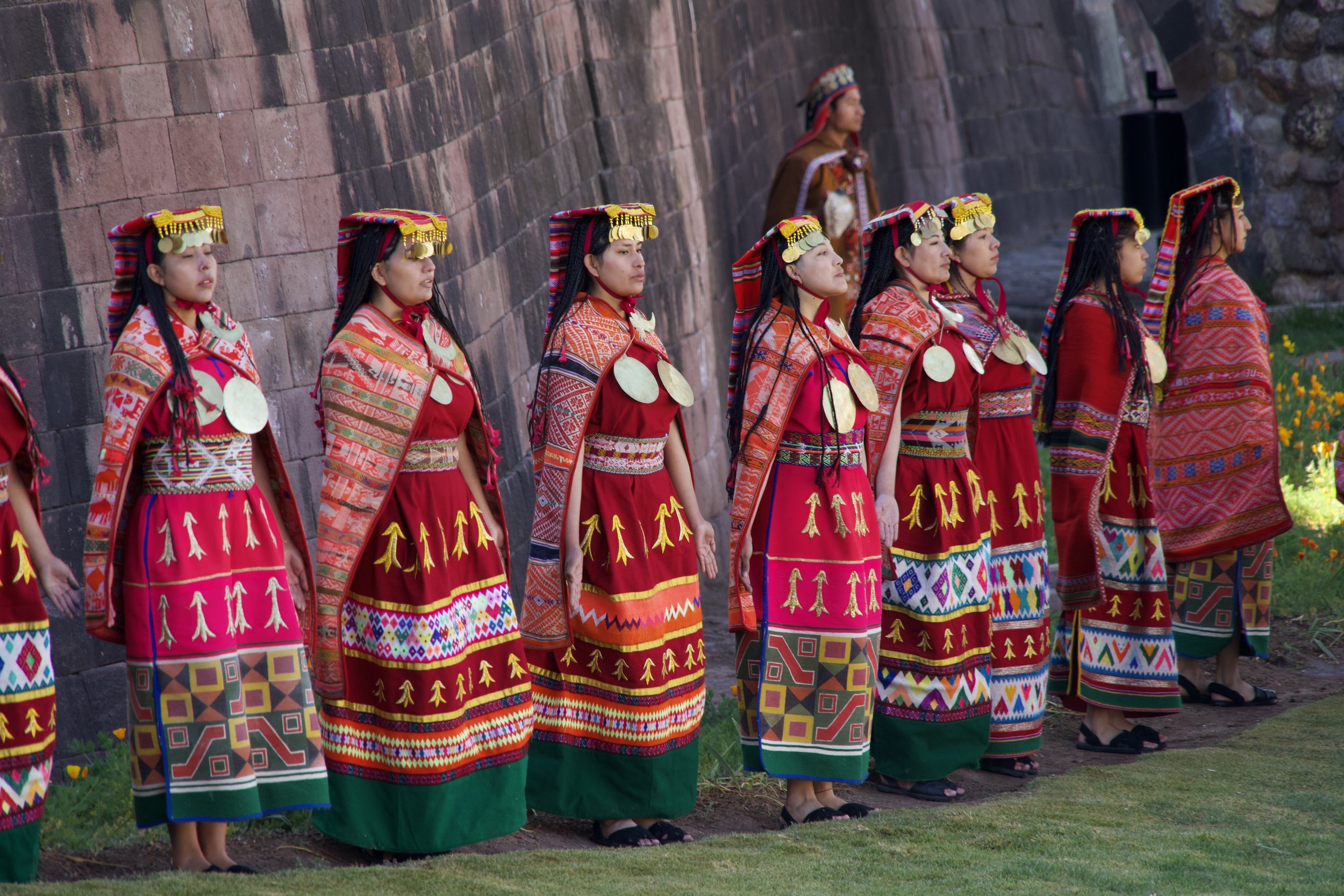

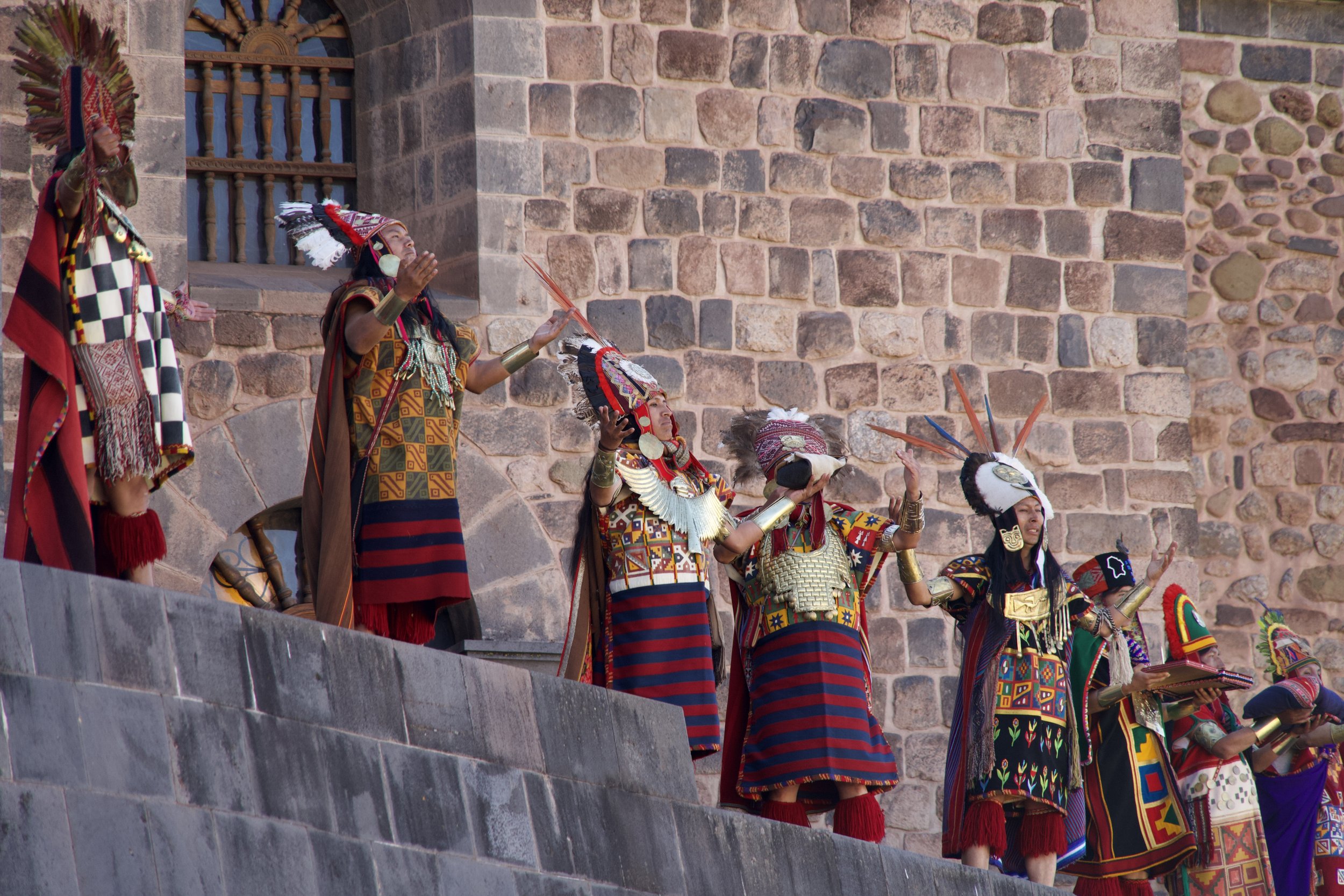
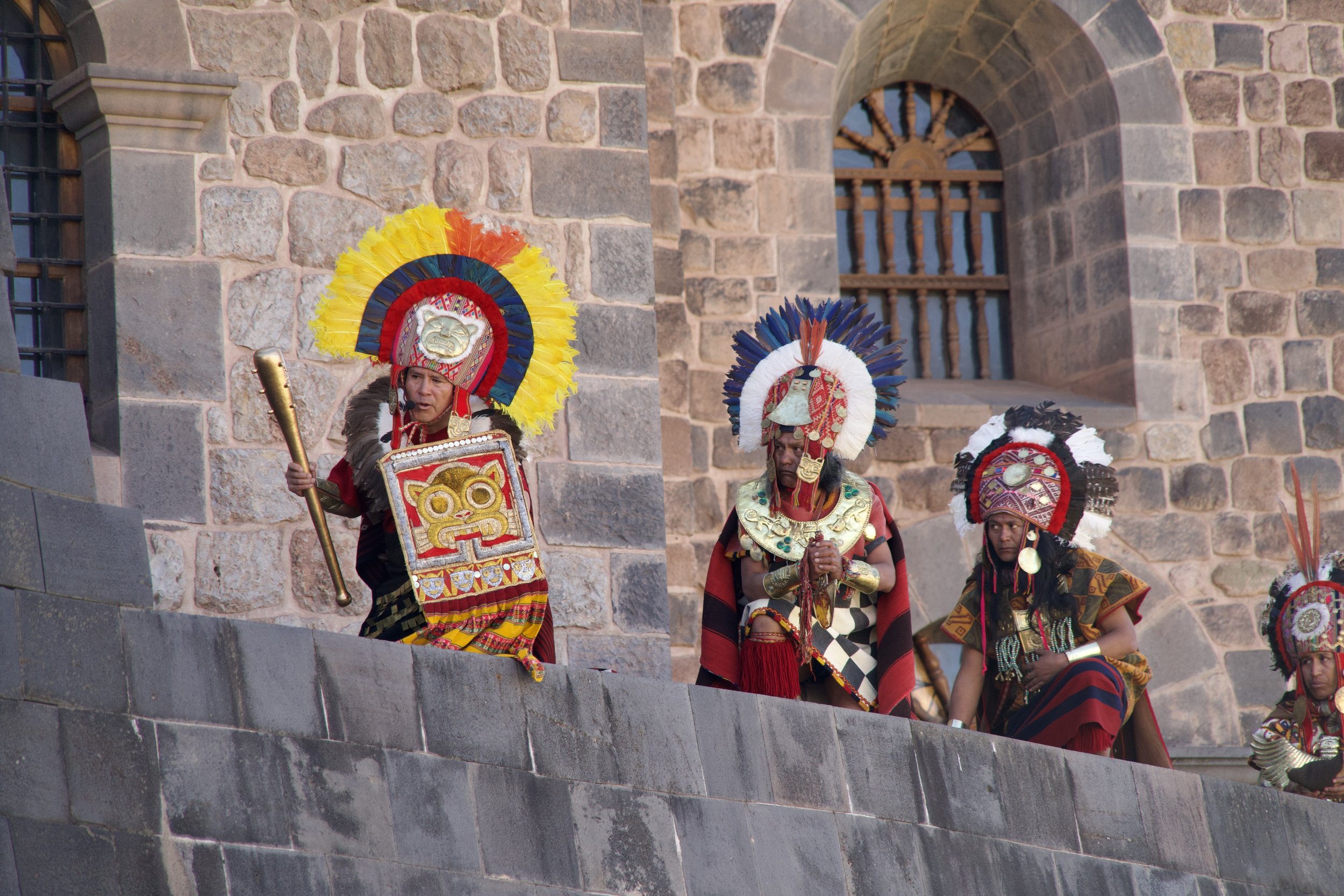
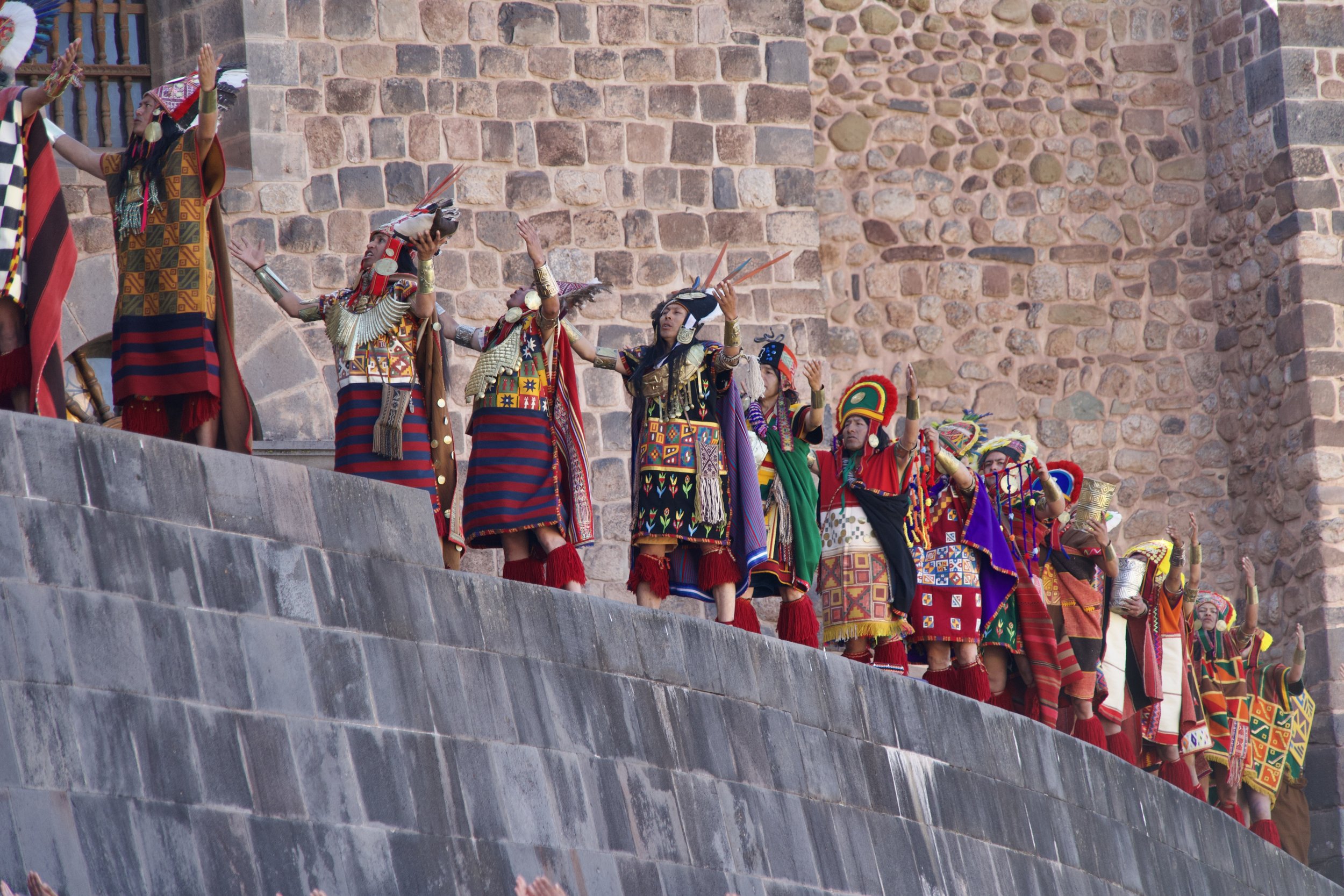
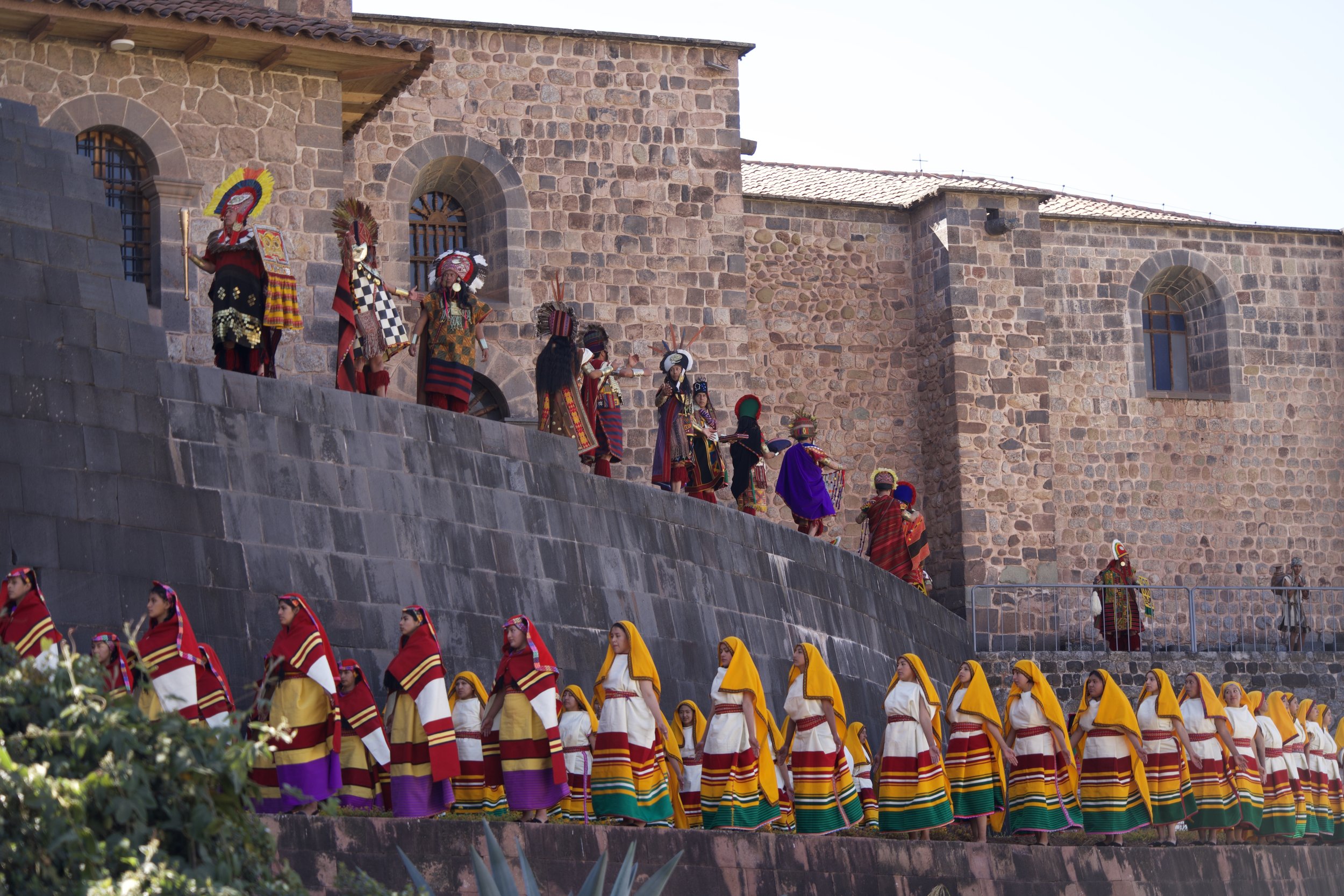
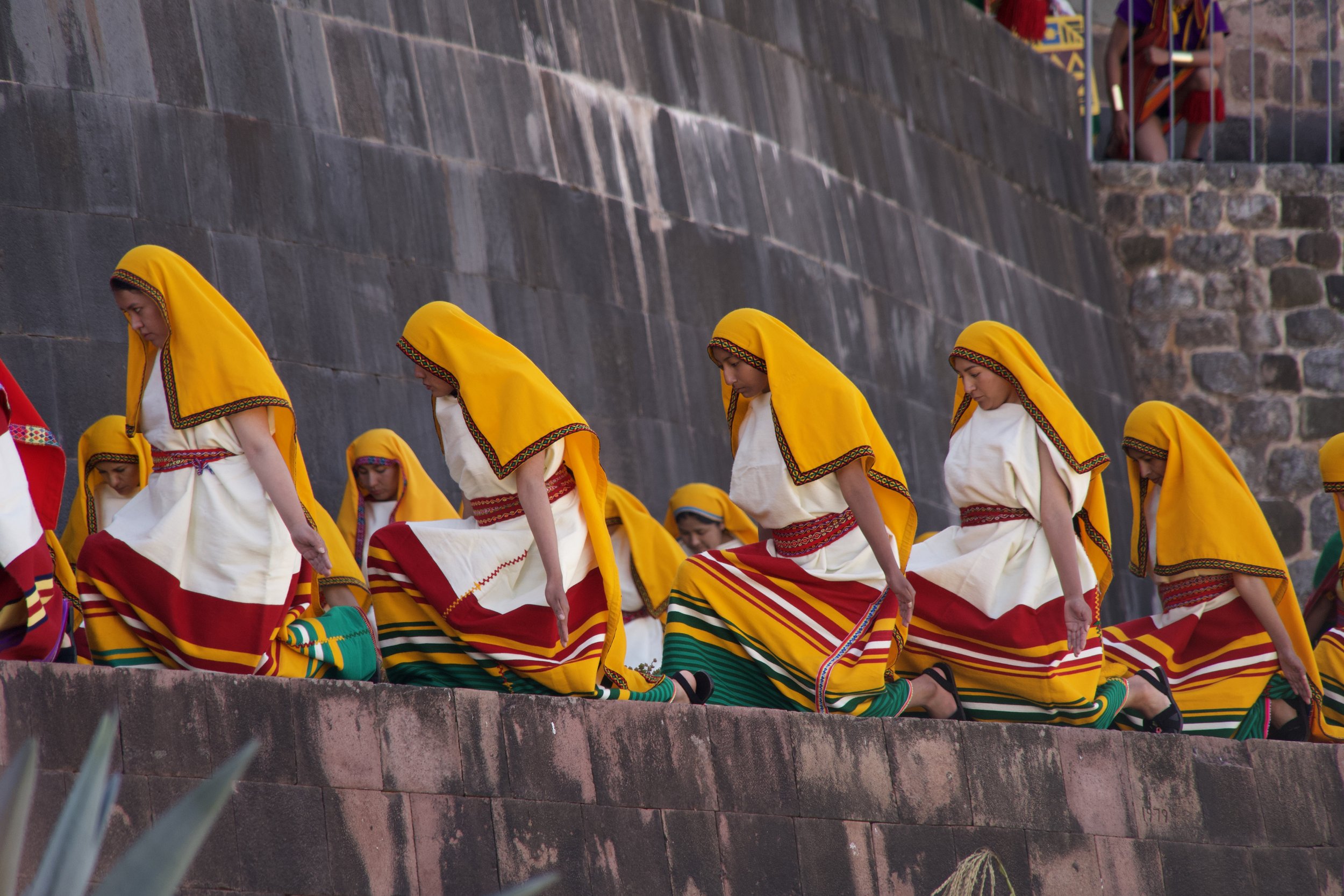
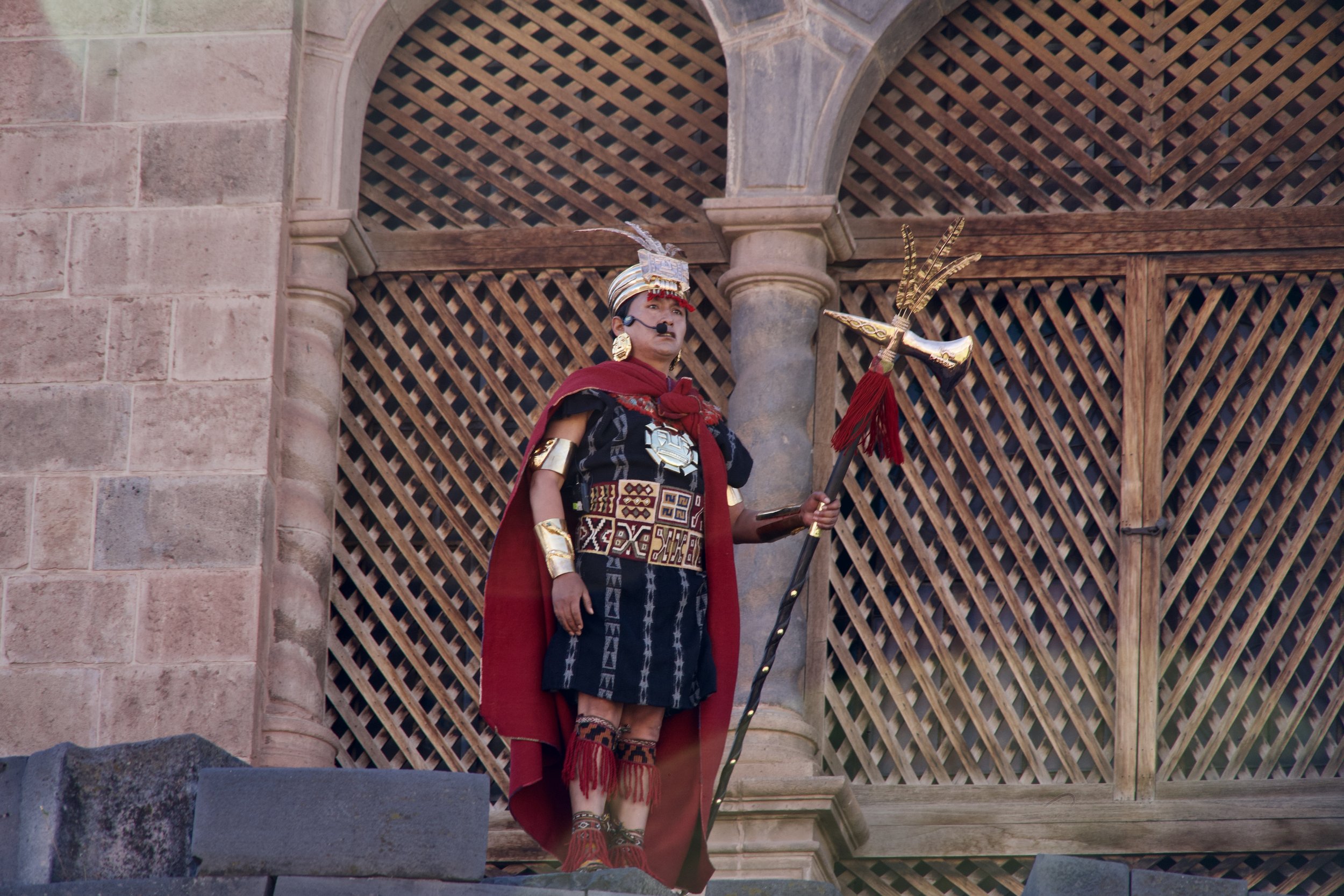
The last woman to appear is the Qoya, who was the Inca’s wife and held considerable power. Finally, the Inca’s generals appear at the top of the wall, just before the Inca himself.
The Inca and generals have some speaking parts, all in Quechua, then everybody filters back into the Qorikancha before leaving from the main door and parading through the streets to the Plaza de Armas. The plaza used to be called Huaykaypata and was used by the Inca long before the Spanish appropriated the space for their own cathedral and colonial buildings. After the ceremony in the plaza, the procession moves uphill to Sacsayhuaman.
Amazonian Antisuyu
After the ceremony at the Qorikancha, the festivities move to the Plaza de Armas, called Haukaypata during the Inca’s time. These actors represent Amazonian tribes from Antisuyu.
Ñustas
Many women had powerful roles during the Incario, though they were not well recorded by the Spanish. Ñustas committed their lives to spiritual practices and the Qoya was usually chosen from among the ñustas.
Inca priest
What I love about this shot is the Andean highlanders in the background. Wearing their traditional ponchos, they came to the city to see the Inca.
The Qoya
The Qoya was the Inca’s wife and partner. Most Qoya had significant political power.
The Inca
The Inca was the head of state, though in modern times historians tend to call all Quechua people from the past Inca. Many historians now argue that the people should be called Cusqueñian or Quechua, since there was ever only one Inca at a time.
Ceremony at Huakaypata (Plaza de Armas)
The scene at Huakaypata is centered around reading coca leaves. The Inca and several of his generals and priests speak about the future of Tahuantinsuyu and how the coca leaves show an auspicious start to the coming year.
Sacsayhuaman festivities
If you want a good view of the ceremonies at Sacsayhuaman, I recommend paying for a seat in the bleachers. There are adjacent hills where hundreds more people watch, but people are constantly jockeying for space and you’re quite a ways from the action.
Ceremony at Sacsayhuaman
The biggest parts of the play happen at Sacsayhuaman. Soldiers and representatives from the four suyu enter Chukipanpa, the flat center of the Sacsayhuaman archeological site. An artificial usnu is built every year as a stage for the ceremonies. A representative of each suyu comes forward to give a report of how each region is doing. One after the other, the reports are not positive.
Worried, Pachacutec performs three rituals, the first with chicha. Chicha is a fermented corn beverage, with a lower alcohol content than beer but higher than kombucha. Next he has ritual fires lit at the four corners of the usnu. The results of both rituals show good fortune.
In the last ritual, the Inka asks for a black llama to be sacrificed. Black was the most sacred color for the Inca and only black llamas were sacrificed during important rituals. A symbolic llama is sacrificed and fake heart and lungs pulled from the body and thrown into the fire. The priests tell the Inca that the sacrifice was successful and that the coming year will be positive.
The free seats
There are bleachers set up on the main lawn, around the usnu. People who want to see the ceremony up close have to buy a seat but there are hundreds of people watching from the hillsides around for free. From the hillsides you can see and hear relatively well, but buying a seat is worth it if you don’t want to be jostling with a crowd for two hours.


